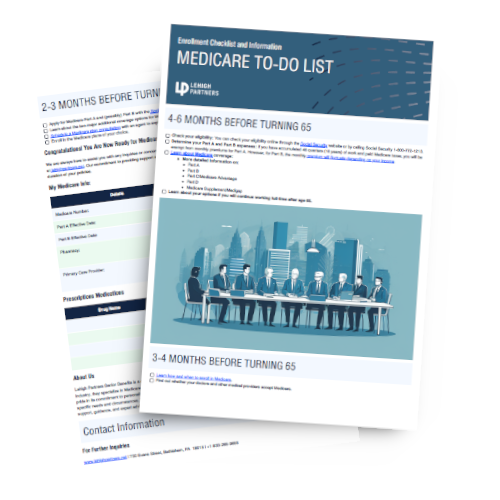
Turning 65 is a significant milestone in life, not only because it usually marks the beginning of retirement but also because it opens the door to important healthcare and financial benefits. As you embark on this new chapter, understanding how to navigate Medicare and Social Security becomes crucial. In this blog post, we will provide a summary to help you make informed decisions and take the necessary steps to ensure a smooth transition into this next phase of your life.
- Understand the Basics: Before diving into the details, it's essential to grasp the fundamental concepts of Medicare and Social Security. Medicare is a federal health insurance program primarily for individuals aged 65 and older, while Social Security is a program that provides retirement income benefits. Knowing the basics will give you a solid foundation to build upon.
- Enroll in Medicare: Enrolling in Medicare is an important step, and understanding when and how to do it will help you avoid any potential penalties or delays in coverage. You typically become eligible for Medicare at age 65, and the initial enrollment period begins three months before your birthday month and ends three months after. It's highly recommended to enroll during this seven-month period to avoid any gaps in coverage.
- Choose Medicare Parts A and B: Medicare is divided into different parts, and it's crucial to select the ones that best suit your needs. Part A provides hospital insurance, and most people are automatically enrolled in Part A if they meet certain requirements. However, Part B, which covers medical services and preventive care, requires an active enrollment process. You can choose to sign up for Part B during the initial enrollment period or delay it if you have comparable coverage through an employer.
- Consider Medicare Advantage and Supplement Plans: In addition to Medicare Parts A and B, you have the option to explore Medicare Advantage (Part C) and Supplement (Medigap) plans. Medicare Advantage plans are offered by private insurance companies and cover the same benefits as Parts A and B, along with additional services. Medigap plans help cover the costs that Original Medicare doesn't pay for, such as deductibles and copayments.
- Understand Social Security Retirement Benefits: As you approach 65, it's important to assess your potential eligibility for Social Security retirement benefits. You can claim Social Security benefits as early as age 62, but delaying your application can result in higher monthly payments. Understanding the calculations and factors that impact your retirement benefits will help you make an informed decision about when to claim them.
- Coordinate Medicare and Social Security: Coordination between Medicare and Social Security is crucial for ensuring smooth transitions and proper coverage. If you are receiving Social Security benefits already, you will be automatically enrolled in Medicare Parts A and B. However, if you are not receiving Social Security benefits, you will need to actively enroll in Medicare.
As you turn 65, taking the necessary steps to navigate Medicare and Social Security will play a significant role in securing your health and financial well-being in retirement. By understanding the basics, enrolling in Medicare, exploring additional coverage options, considering Social Security benefits, and coordinating the two programs, you can confidently embrace this new chapter in your life. Remember, seeking guidance from healthcare professionals and financial advisors can provide further assistance in making the right decisions for your personal circumstances.
Disclaimer: This blog post is for informational purposes only and should not be construed as professional financial or medical advice.

